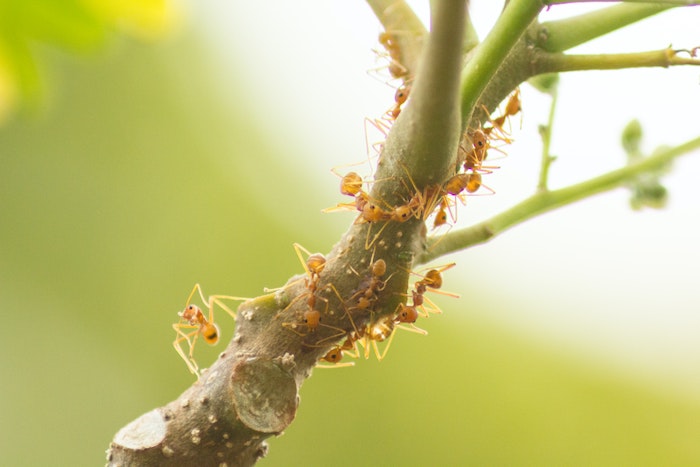5 Common Pests That Attack Trees
Unfortunately, insects are attracted to trees and enjoy making meals of both leaves and seeds which is great for the pests, but not so much for the overall look and feel of a nicely landscaped yard. Aside from impacting the value of a home, they can also create a mess, such as leaving a carpet of caterpillar droppings on your deck. Trees that endure too much damage can become weak and need to be removed from your property. Trees use their leaves to produce food. Most tree leaves have a protective covering that protects them at least partially from becoming a smorgasbord, but during the first week of sprouting, the new, tender leaves don’t have this protection.
There are almost as many insect pests as there are tree species. Many insects limit their feeding to just a few, or even one, tree species. Unfortunately, their actions can attract other pests, and they can also spread diseases such as fungus as they spread from one tree to another. When this happens it is likely to affect the appearance of your home and its property value, so it’s . Let’s take a look at some common tree pests:

Aphids, lace bugs and scale insects –
These pests don’t actually eat the leaves but suck the fluids out of the leaves. This causes the leaves to form spots that turn brown or black, eventually killing the leaves and causing them to drop. Unfortunately, almost all sucking insects stay mostly on the undersides of leaves, making them hard to discover and destroy. Aphids produce a sweet, sticky substance that attracts certain ants that feed on this syrup. The honeydew attracts mold and other fungi, potentially causing disease along with the damage they directly cause. Some cause galls to form on leaves or even roots.
To find them, look for stunted, misshapen, curling, or yellowing leaves. Check the undersides and feel for the sticky honeydew. A trail of ants may alert you to aphid colonies. The best way to treat these insects is to use a systemic insecticide. These come as a foliage spray or soil treatment. The tree absorbs the insecticide and distributes it throughout, making the tree a veritable poison meal. This is especially good for scale insects, which have protective shells that shield them from most insect sprays.
Gypsy moths –
They continue to be destructive, and the caterpillars can cause significant damage to an entire forest if left unchecked. The female adult moth is a mottled gray, while the male is larger and white. They live only two weeks, with their only goal to find a mate.
Getting rid of them involves spotting the caterpillars and spraying with a bacterial spray or insecticide when the caterpillars are young. Spotting egg masses on tree trunks, branches, and your house or outbuildings and destroying them helps. Keeping your yard clean of dead branches and stumps removes potential places for laying eggs. Gypsy moth traps help catch the adults on their quest for mates.
Inchworms or Cankerworms –
These pests can destroy so much foliage that they inflict stress on trees, eventually making them susceptible to disease and other pests. They attack many hardwoods and fruit trees, going through population cycles. The worms are greenish or grayish and about an inch long. The wingless females must crawl up trees to lay their eggs. Wrapping trunks in fall with plastic sheeting prevents the females from climbing. Spraying can be done if the worms are noticed early enough before the worms are half-grown.
Tent Caterpillars –
These are especially exasperating. While they prefer fruit trees, including ornamental kinds, they can nest in some hardwoods. These larvae weave weblike tents to live in, especially in the crotches of tree branches, protected from cold and rain. They venture out to feed three times a day. While they usually don’t cause as much damage as some other pests, large numbers of tents can lead to defoliating the tree, especially smaller trees, which if unchecked can easily rid your tree of it natural privacy producing foliage. Then they look for another tree and start all over.
Unfortunately, those tents keep insect spray from penetrating. They can be killed by contact insecticide spray on the leaves which will get them when they eat. If tents are low enough, they can be destroyed. Higher ones can be targeted if you can poke a hole in the web, then use a long-reach wasp spray to get into the nest.
Tree Borers –
Will lay their eggs on or under bark. The larvae eat through the growing wood. Most borers develop into beetles, but a few species are moths. To find them, inspect tree trunks for small holes, especially if they leave sawdust on branches below the holes. Woodpeckers are also a signal that you may have borers, as they specialize in finding these pests. Unfortunately, treatment mainly consists of preventing future infestations with chemicals and keeping trees well cared for to help them fight the borers. Keep tree debris away from the trunk, as some of the beetle larvae will pupate over the winter there.
Pests aren’t just limited to gardens. Keeping your trees in good shape means watching for insect pests and eradicating them to keep your landscaping looking beautiful and healthy.
If you’re looking for other tree service articles and resources then click here.

